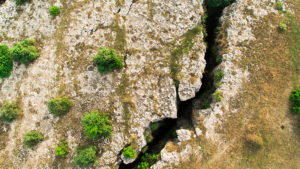
Steps you take before an earthquake hits can protect your home and personal safety.
If you live near a fault line, you likely are no stranger to tremors or other earthquake activity. Preparation may be an ongoing process for your family.
The Department of Homeland Security’s Ready.gov website offers a number of tips to help you prepare for an earthquake.
BEFORE AN EARTHQUAKE
- Create a disaster plan to protect you and your family.
- Take steps to reduce the effects of ground movement. Houses built prior to 1945 should be retrofitted with foundation anchoring that secures the home by bolting the sill plate to the foundation. You also can bolt down furniture or appliances.
- Store flammables in a cabinet and move heavier items to lower shelves.
- Strap water heaters to adjacent walls or floors to prevent them from tipping over, which can cause breaks in gas or water lines during an earthquake.
- Brace the cripple walls – walls less than a story in height found between the foundation and first floor of a building and made of weak sheathing materials – to help prevent wall movement during an earthquake.
- Have a licensed plumbing contractor install seismic shut-offs: devices designed to shut off the gas supply to a house during a significant earthquake.
- Protect your breakable items by putting museum wax on the base. The wax helps to secure the item to a shelf or other surface to prevent it from falling and breaking.
- Use professional art-hangers to install artwork, so that each piece is properly secured to the structure to reduce the risk of damage during an earthquake.
DURING AN EARTHQUAKE
- Indoors: Do not move more than a few feet, as items could fall and create a hazard. Stay near the interior of buildings away from windows, which can shatter.
- Indoors: Do not try to escape a building during an earthquake because of the potential danger of falling debris.
- Outdoors: Find a clear space away from trees and powerlines and drop to the ground until the shaking stops.
- In a vehicle: Pull over to a clear location, stop and stay there — with your seatbelt fastened — until the shaking has stopped,
- In a coastal area: Move to higher ground, as tsunamis are often created by earthquakes, and higher ground will keep you safest from the waves.
MORE INFORMATION
Web site: National Safety Council Earthquake Preparedness
This loss control information is advisory only. The author assumes no responsibility for management or control of loss control activities. Not all exposures are identified in this article. Contact your local, independent insurance agent for coverage advice and policy service.
